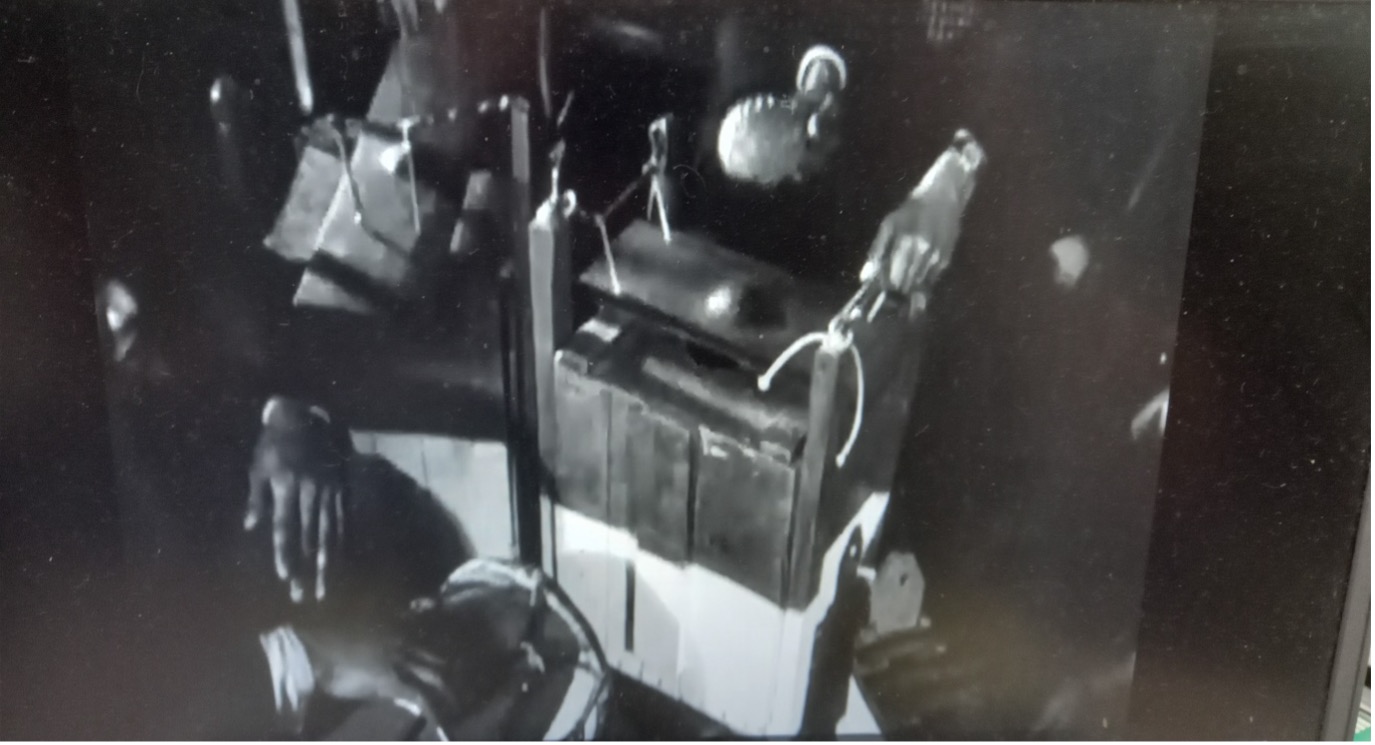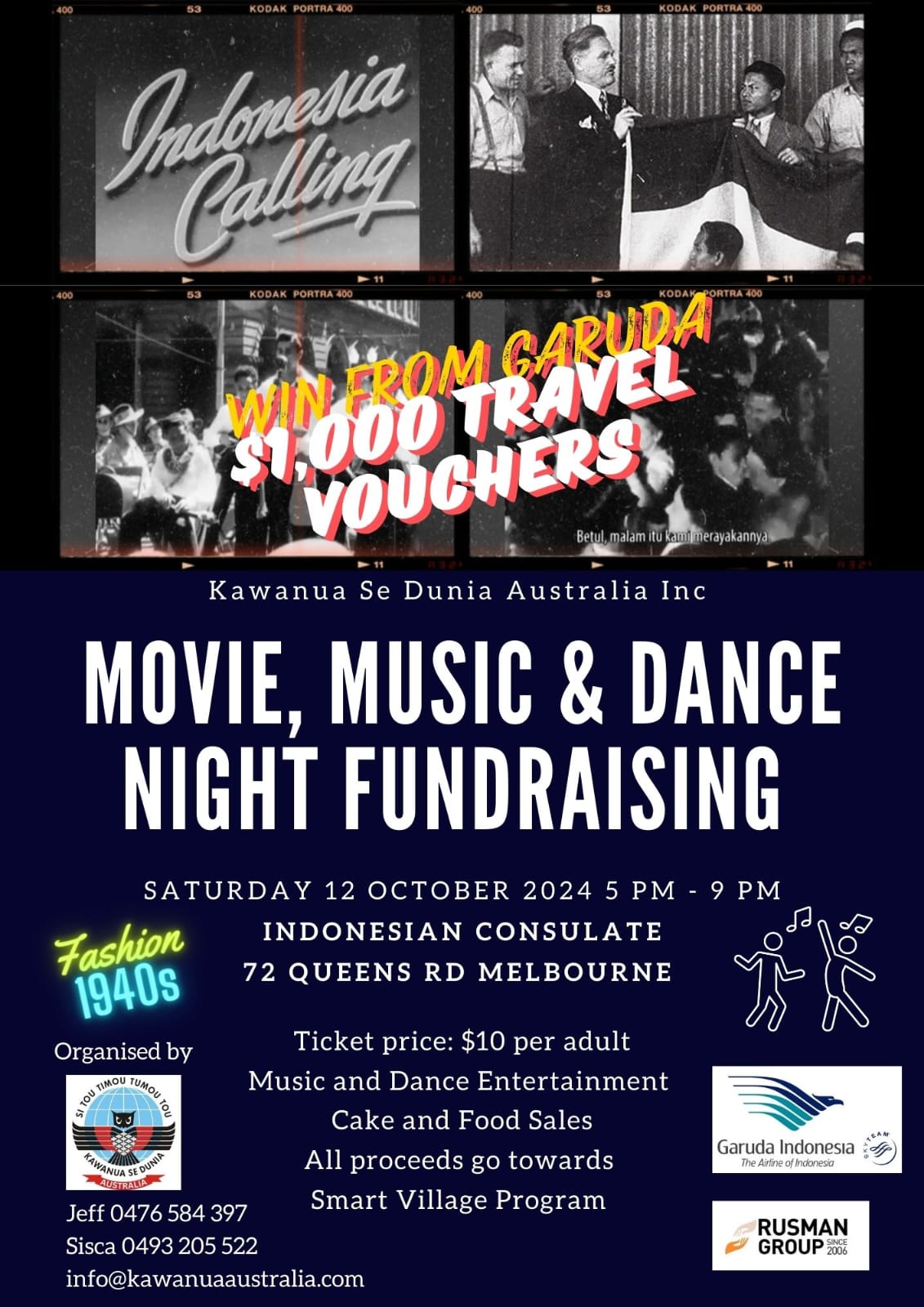

Anthony Liem wrote a text about the history of the Gamelan Digul, the first gamelan in Australia, which is an important historical object illustrating the fight for Indonesian independance against Dutch colonial rule. This gamelan is at display at the Monash University, Performing Arts Centre in Melbourne in the Margaret Kartomi Gallery.

The famous Gamelan Digul, made in 1927 by the most intransigent critics of Netherlands East Indies (NEI) colonialism who were arrested and exiled to the notorious prison camp in Boven Digul, West Irian. One prisoner, an extremely talented musician, used found materials to build a complete gamelan orchestra in this “worst of all places of exile”. When the Japanese attacked in 1942 the NEI government moved to Australia with their Digul prisoners and the gamelan. Some played the gamelan for audiences in Melbourne, establishing very early personal links between the two countries, while working surreptitiously for the Indonesian revolution. When Indonesia’s Independence was declared in 1945, the prisoners returned home to struggle against the returning Dutch, leaving the gamelan in the Museum of Victoria, which gave it to MAMU in 1978. The Music Archive of Monash University (MAMU) has been collecting Indonesian musical instruments, theatrical puppets and masks, textiles, original field recordings, photographs, books and more since its foundation in 1975.
Anthony Liem is talking about the historical context of this instrument at a fundraising ralley at the Indonesian consulate on 12 October:
"The 1920s painted timber and iron gamelan Digul accompanied the Indonesian Political Prisoners from Tanah Merah and Tanah Tinggi in the Boven (Upper) Digul region near Merauke, Papua (New Guinea) to Cowra POW Camp in NSW, Australia in June 1943. The Indonesians were interned in the depths of the jungle in Papua by the Dutch East Indies Government since 1928. Their crime was their demand for an Independent Indonesia or Freedom/Merdeka. This prison was located in the depth of the jungle interior of Papua; therefore, any person attempting to escape would not survive because of deadly tropical diseases or the crocodile infested rivers.
Boven Digul, view of the camp along the river Digul
These adverse circumstances di not prevent the creation of this Gamelan Digul, a Javanese gamelan orchestra, comprising of 19 instruments. This gamelan was made by Surakarta born musician and political activist Bapak Pontjopangrawit (1893-1965), one of the inmates in the Tanah Merah political prison camp. Pak Pontjopangrawit was an accomplished gamelan musician in the Kraton at Surakarta under Sunan Paku Buwana X. This gamelan was used to entertain the prison population in Boven Digul including the Indonesian future leaders, Mohammad Hatta and Sutan Sjahrir.

Mohammad Hatta (Vice President in 1945) and Sutan Sjahrir (Prime Minister in 1945)
Although the gamelan was made from rudimentary materials available in the remote jungle prison camp such as wooden packing cases, milk tins, sardine cans and metal food containers, the Gamelan Digul is a finely crafted set of musical instruments. It is unique in that these primitive instruments produce the sound of a gamelan as heard in the Kraton Palace of Surakarta.
This gamelan was brought to Australia in June 1943 by the political prisoners, who were transferred from the hot and humid tropical jungle to freezing cold and remote Cowra Prison of War Camp in southeast Australia. They carried the gamelan as a symbol of their survival, defiant resistance to colonialism and being slaves of an alien European regime.
In 1943, New Guinea or Papua was in danger of being fully occupied by the Japanese Armed Forces. The Dutch East Indies Authorities decided to transfer their Indonesian political prisoners to Australia, to avoid the possibility of these political prisoners collaborating with the Japanese to create an Independent Indonesia. Some 500 prisoners including their families, women and young children were taken by Catalina planes from Boven Digul to Horn Island in the Torres Strait. Among the political prisoners was the Gamelan Digul. Then by ship to Mackay and Brisbane in Queensland. They were given some clothing and POW gear, before being transported by train to Sydney. The strange group of these ‘jungle aliens’ arrived on June 25, 1943, at Cowra railway station. Most were still wearing their tropical sarong and cotton shirts, shivering in the bitter cold winter weather of inland south Australia. During their six months stay, thirteen of them died of pneumonia and German measles, including four young children and a baby.
During their rail journey to Cowra, one of the prisoners managed to alert a Sydney rail employee, to the fact, that they were political prisoners of the Dutch. This railway employee took the note to his union. The Union together with Ms. Laura Gapp of the Australia Indonesia Association contacted the Australian Foreign Minister Herbert Evatt. The Australian Government, then realised that the Digulists were not prisoners of war, therefore forced the Dutch to release the Indonesian political prisoners, because their demand for a free country was not a crime under Australian Law. In fact, the transfer of these Dutch Political Prisoners to Australia, became a major blunder for the Dutch, because these Digulists persuaded the Australian Maritime unions and eventually the Australian Government to support their cause.
After their release from Cowra, these former Digulists worked together with the Australian Waterside Workers and others to support the Indonesian Independence in 1945. Other Digulists found employment with the NIGIS, the Dutch Information Office in Melbourne. Although living in a different country, Australia, the Digulists, did not lose their passion for an Independent Indonesia.
The Gamelan Digul in the 1946 film Indonesia Calling - one of the dansers is ex-Digulist Sardjono.
On August 17, 1945, the Indonesian Independence was proclaimed in Jakarta, the capital of Indonesia. This was the news the Digul activists were waiting for. They immediately went into action to support their country’s Independence Proclamation. The Australian Unions came to their support, giving the 1942 Atlantic Charter, providing a guarantee of independence for any country wishing to be independent, the reason for their support.
The Maritime Unions together with the Indonesian Seamen, their Chinese and Indian mates imposed a ban on Dutch ships in Australian Harbours. These ships were to take the KNIL Dutch Military back to recolonise Indonesia. Dutch film director Joris Ivens filmed this shipping ban in Sydney harbour. One of the dance scenes in the 1946 film Indonesia Calling, featured the Gamelan Digul. The gamelan was covered in white cloth and was used to accompany two Javanese dancers. One of the dancers was Sardjono, one of the leaders in the 1928 Independence movement. This was the only record of the gamelan in operation before some of the instruments were lost.
To comply with Australia’s then Immigration Policy, all Indonesians were returned to Indonesia soon after Independence was declared. The gamelan Digul was donated to the Museum of Victoria in 1946 and then came to Monash University in 1977.
The Gamelan Digul, brought to Australia by the Indonesian political prisoners, became a symbol of the Australian Support for the Indonesian Struggle for their Independence. Although the Gamelan was made using crude implements of wood and metal food containers, it kept alive the spirit of the political prisoners desiring freedom or Merdeka from the Dutch colonialism. Political prisoners, who were exiled and living in inhuman conditions in the depths of a Papuan Jungle with no chance of escape. These political prisoners with their Gamelan, symbolising their Spirit for a Free and Independent Indonesia was transferred to Australia. Realising that these Indonesians were freedom fighters, thousands of Australian workers and students became supporters of the Indonesians in their struggle. This was soon followed by the support from the Australian Government under Prime Minister Ben Chifley. Indonesia appointed Australia to be their representative in the negotiations for the recognition of its Independence. An Independent and Free Indonesia was eventually recognised by the Dutch in 1949.
The Gamelan Digul, and its Spirit for Independence, after a 20-year journey from the tropical jungle in Papua to Cowra, eventually found a safe haven at Monash University in Melbourne.

Poedijono playing a Bonang Gongchime form the Gamelan Digul and Margaret Kartomi playing a Javansese Gamelan equivalent. (Photo MAMU)
Professor Margaret Kartomi at Monash University organised the storage and care of the Gamelan Digul. She has written a book on the Gamelan Digul – The Gamelan Digul and the Prison Camp Musician, who built it – an Australian Link with the Indonesian Independence Revolution

Gamelan Digul - Bonang Slendro - Rantang Kiriman Food Containers on frame made from timber used in packing cases.

Gamelan Digul - Kendhang / drum - image form Ivens' Indonesia Calling (1946) 
Gamelan Ensemble at the Kraton in Yogyakarta - musicians playing the Bonang and Gong Gede
ANTHONY LIEM – RETIRED ARCHITECT – SEPTEMBER 2024
REFERENCES:
Joris Ivens - 1946 FILM INDONESIA CALLING – https://www.youtube.com/watch?v=iAzfM9cQvZQ
Margaret Kartomi – The Gamelan Digul and the prison Camp Musician, who built it – an Australian Link with the Indonesian Independence Revolution
Jan Lingard – Refugees and Rebels – Indonesian Exiles in Wartime Australia